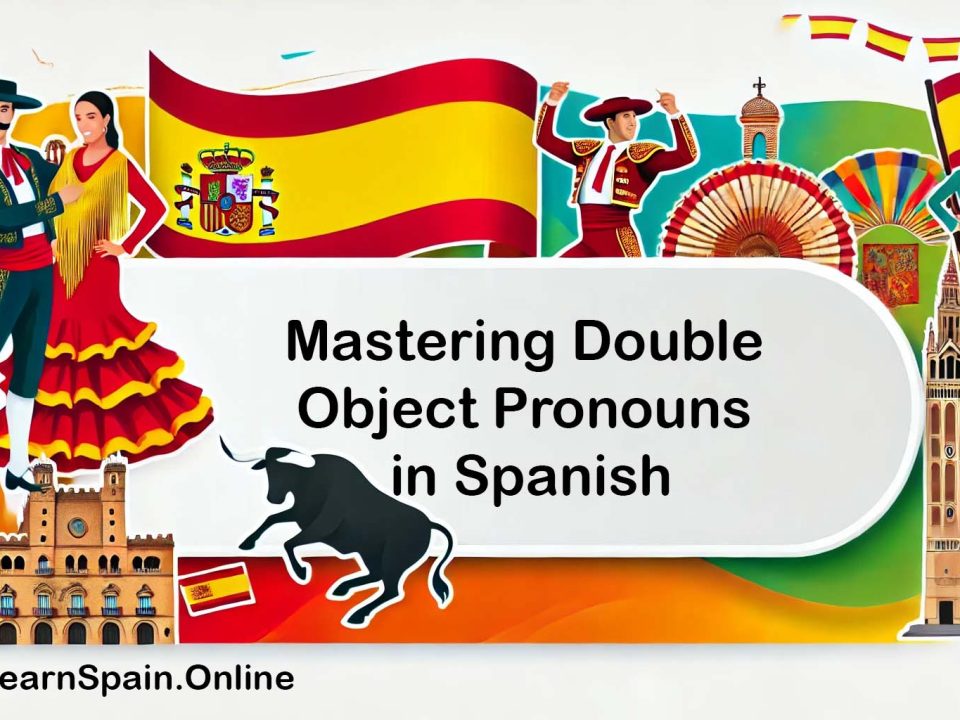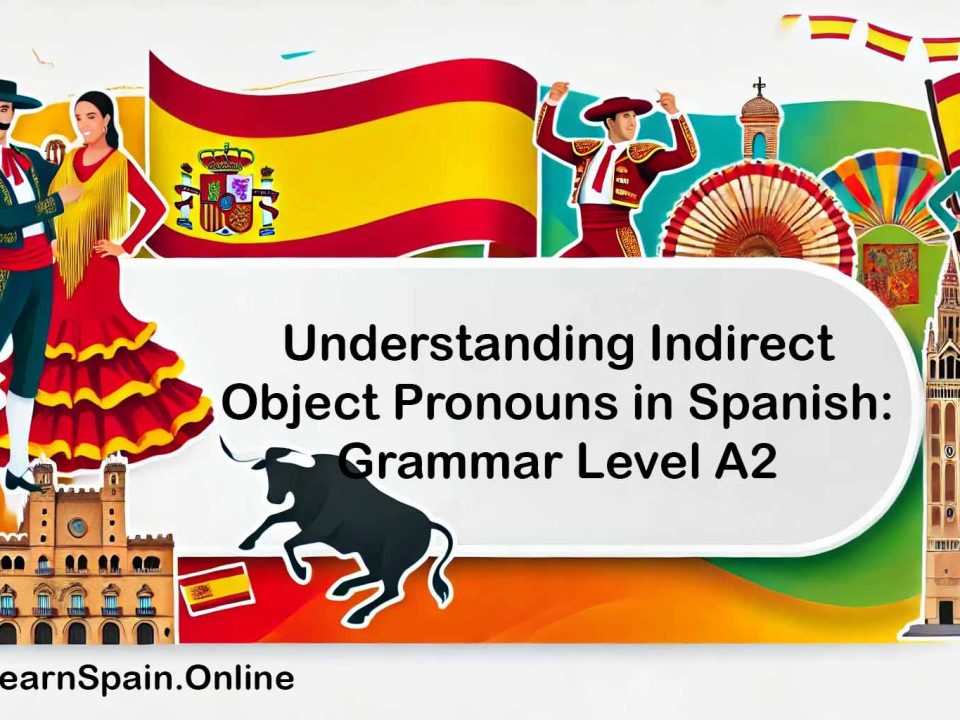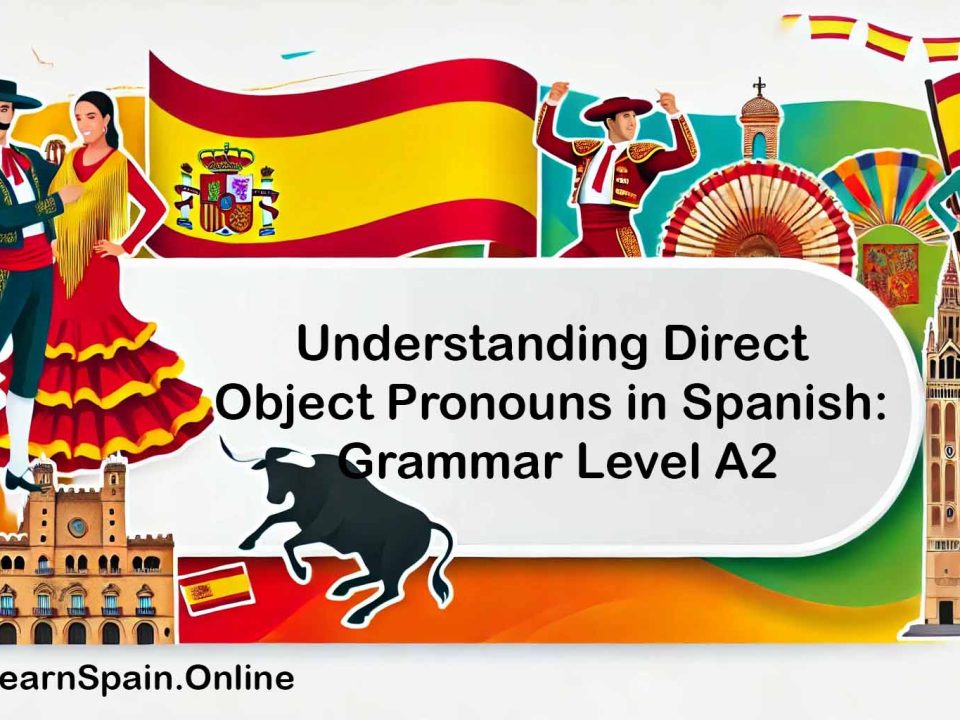
Reflexive Verbs in the Past Tense
July 30, 2024
Formal vs. Informal Commands in Spanish
July 30, 2024Understanding Commands (Imperative Mood) in Spanish
The imperative mood, known as “el modo imperativo” in Spanish, is used to give commands, make requests, or offer invitations. It’s a crucial aspect of the language, especially for effective communication in everyday situations. This guide will provide a comprehensive introduction to the imperative mood, including its conjugation, usage, and numerous examples to help you understand and apply it correctly.
Conjugation of Regular Verbs in the Imperative Mood
The imperative mood in Spanish has different forms depending on whether the command is informal (tú) or formal (usted), as well as whether it is directed at one person or multiple people (vosotros/vosotras, ustedes). Here’s how to conjugate regular verbs in the imperative mood:
-AR Verbs
Example Verb: Hablar (to speak)
- Tú: habla (speak)
- Usted: hable (speak)
- Nosotros/Nosotras: hablemos (let’s speak)
- Vosotros/Vosotras: hablad (speak)
- Ustedes: hablen (speak)
-ER Verbs
Example Verb: Comer (to eat)
- Tú: come (eat)
- Usted: coma (eat)
- Nosotros/Nosotras: comamos (let’s eat)
- Vosotros/Vosotras: comed (eat)
- Ustedes: coman (eat)
-IR Verbs
Example Verb: Vivir (to live)
- Tú: vive (live)
- Usted: viva (live)
- Nosotros/Nosotras: vivamos (let’s live)
- Vosotros/Vosotras: vivid (live)
- Ustedes: vivan (live)
Negative Commands
To form negative commands, place “no” before the verb. The conjugation changes slightly, particularly for tú commands, where the verb takes the form of the present subjunctive.
Negative Commands for -AR Verbs
Example Verb: Hablar (to speak)
- Tú: no hables (don’t speak)
- Usted: no hable (don’t speak)
- Nosotros/Nosotras: no hablemos (let’s not speak)
- Vosotros/Vosotras: no habléis (don’t speak)
- Ustedes: no hablen (don’t speak)
Negative Commands for -ER Verbs
Example Verb: Comer (to eat)
- Tú: no comas (don’t eat)
- Usted: no coma (don’t eat)
- Nosotros/Nosotras: no comamos (let’s not eat)
- Vosotros/Vosotras: no comáis (don’t eat)
- Ustedes: no coman (don’t eat)
Negative Commands for -IR Verbs
Example Verb: Vivir (to live)
- Tú: no vivas (don’t live)
- Usted: no viva (don’t live)
- Nosotros/Nosotras: no vivamos (let’s not live)
- Vosotros/Vosotras: no viváis (don’t live)
- Ustedes: no vivan (don’t live)
Irregular Verbs in the Imperative Mood
Several verbs have irregular forms in the imperative mood. Here are some of the most common ones:
Irregular Affirmative Tú Commands
- Decir (to say): di
- Hacer (to do/make): haz
- Ir (to go): ve
- Poner (to put): pon
- Salir (to leave): sal
- Ser (to be): sé
- Tener (to have): ten
- Venir (to come): ven
Irregular Negative Tú Commands
- Decir (to say): no digas
- Hacer (to do/make): no hagas
- Ir (to go): no vayas
- Poner (to put): no pongas
- Salir (to leave): no salgas
- Ser (to be): no seas
- Tener (to have): no tengas
- Venir (to come): no vengas
Examples of Commands in Sentences
Here are some examples to illustrate the use of the imperative mood in different contexts:
- Affirmative Commands
- Tú: Habla más despacio. (Speak more slowly.)
- Usted: Coma más verduras. (Eat more vegetables.)
- Nosotros: Hablemos con el director. (Let’s talk to the principal.)
- Vosotros: Vivid en el presente. (Live in the present.)
- Ustedes: Beban más agua. (Drink more water.)
- Negative Commands
- Tú: No hables tan rápido. (Don’t speak so fast.)
- Usted: No coma tanta azúcar. (Don’t eat so much sugar.)
- Nosotros: No vivamos en el pasado. (Let’s not live in the past.)
- Vosotros: No salgáis tarde. (Don’t go out late.)
- Ustedes: No vayan al parque hoy. (Don’t go to the park today.)
Using Commands in Different Contexts
Commands can be used in various contexts, such as giving instructions, making requests, offering invitations, and giving advice or warnings.
Giving Instructions
- Sigue recto y luego gira a la derecha. (Go straight and then turn right.)
- Abre la puerta, por favor. (Open the door, please.)
Making Requests
- Pásame la sal, por favor. (Pass me the salt, please.)
- Dime la verdad. (Tell me the truth.)
Offering Invitations
- Ven a mi fiesta el sábado. (Come to my party on Saturday.)
- Acompáñame al cine esta noche. (Join me at the cinema tonight.)
Giving Advice or Warnings
- Ten cuidado con el perro. (Be careful with the dog.)
- No fumes en el restaurante. (Don’t smoke in the restaurant.)
Practice Exercises
To reinforce your understanding of the imperative mood, try these exercises:
- Conjugate the Verbs: Write the imperative forms for the following verbs in the affirmative and negative for tú and usted:
- Hablar
- Comer
- Vivir
- Ir
- Poner
- Translate the Commands: Translate the following commands into Spanish:
- Speak more slowly. (tú)
- Don’t eat so much sugar. (usted)
- Let’s go to the park. (nosotros)
- Live in the present. (vosotros)
- Don’t tell lies. (ustedes)
- Complete the Sentences: Fill in the blanks with the correct form of the imperative mood:
- (tú) __ la puerta. (Close the door.)
- (usted) __ más agua. (Drink more water.)
- (nosotros) __ la mesa. (Set the table.)
- (vosotros) no __ tarde. (Don’t arrive late.)
- (ustedes) __ con el jefe. (Talk to the boss.)
Additional Tips for Learning Commands
- Practice Daily: Use commands in your daily interactions to become more comfortable with their forms.
- Engage with Media: Watch Spanish TV shows, movies, or listen to songs to hear commands used in context.
- Language Exchange: Practice with a language partner or join a language exchange group to use commands in real conversations.
- Create Flashcards: Make flashcards with commands and their meanings to reinforce your memory.
Conclusion
Understanding and mastering the imperative mood is essential for effective communication in Spanish. By learning how to conjugate and use commands in various contexts, you will significantly enhance your ability to interact in Spanish. Practice regularly, use commands in daily conversations, and soon you will be confident in your ability to use the imperative mood fluently. ¡Buena suerte! (Good luck!)
Links:
Spanish Grammar
Spanish Vocabulary
Spanish Listening
Spanish Stories



